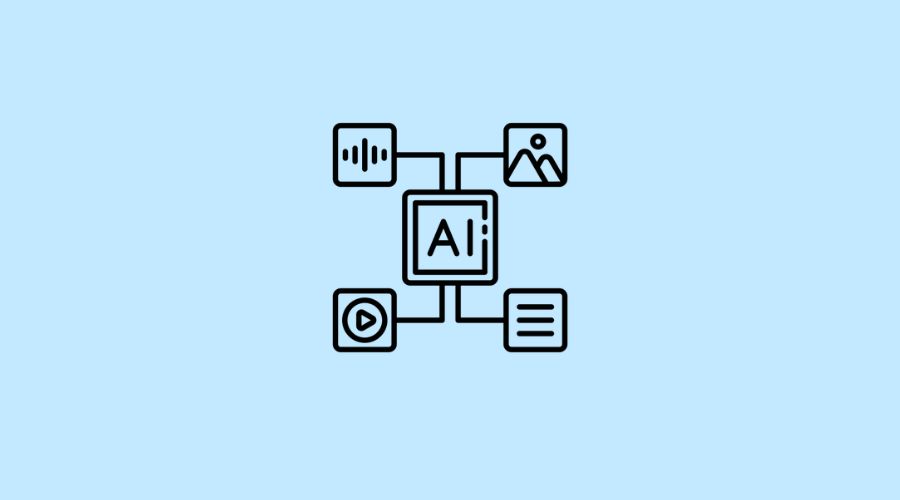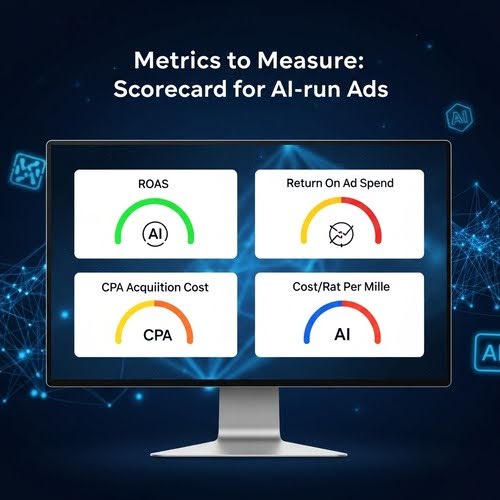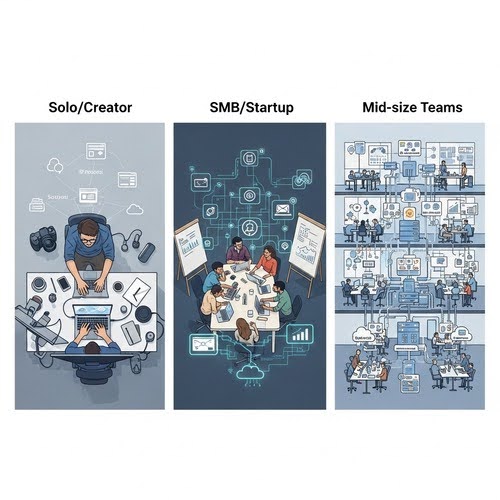Boosting Ads: AI Automation for Social Media Marketing

If your ads cost more each month but don’t convert better, you’re not alone. Manual testing is slow, creative fatigue sets in, and it’s challenging to maintain steady budget pacing across Facebook, Instagram, LinkedIn, TikTok, and YouTube. You want a practical system that writes compelling copy, creates on-brand visuals, identifies the right audience, and optimises ROAS without constant adjustments.
That’s exactly what AI in marketing automation offers: faster creative, smarter targeting, and real-time optimisation to lift CTR and cut wasted spend. Platforms already ship AI tools for creative generation, targeting, and bidding (use them to do more with less). Marketers are also seeing measurable gains. AI-driven Meta campaigns have shown a 22% return on investment.
Ahead, we’ll show how generative AI in marketing can boost your social ads with simple, repeatable workflows.
What AI automation does for Social Ads
Think of AI as a set of helpers for your ad workflow.
It speeds up content generation, finds the right people, adjusts bids automatically, and gives you real-time insights so you can spend less time guessing ( and more time improving ROAS!).
- Create & repurpose content in minutes: Draft captions, resize posts by channel, and generate image/video ideas quickly. Tools like Buffer and HubSpot handle the heavy lifting.
- Target smarter and test faster: Use predictive analytics to build lookalikes, then let dynamic creative optimisation try multiple versions without manual setup. Platform AI (e.g., Meta’s Advantage+ suite) streamlines audience targeting and creative testing.
- Automate budgets & bids as you scale: Set your goal (CPA/ROAS) and let automated bidding protect performance while increasing spend, rather than manually tuning every ad set.
- See what’s working right now: Dashboards surface performance trends and alerts, enabling you to identify creative fatigue early and take prompt action. Audience platforms like GWI make it easy to track and share insights across teams.
Bottom line? AI handles the repetitive work (content generation, testing, automated bidding), while you focus on strategy and creative direction.
Generative AI for Creatives: Faster copy, Images & Video
Strong ads need strong creatives. Generative AI makes it easier to create copy, visuals, and video that truly align with your brand voice.
Instead of spending days drafting and editing, you can now produce multiple ad versions in minutes and focus on what converts.
- Write stronger copy: Use AI to create ad hooks, CTA lines, and platform-specific variations. Then refine them so your brand voice shines through. Paired with dynamic creatives, you can rotate copy automatically and keep messages fresh.
- Produce visuals on demand: Create generative AI images with a simple prompt, expand existing designs, or swap backgrounds to suit placements. Need motion? AI video tools can turn short scripts into scroll-stopping clips.
- Test before you spend: With creative scoring, you can predict which ads are more likely to drive clicks and conversions, helping you put budget behind winners from the start.
If you can use social media advertising for your business, then layering in generative AI creatives is the next step to scale faster and reduce creative fatigue.
Targeting & Optimisation: Algorithms do the Heavy Lifting
Reaching the right audience with ads is one of the most challenging aspects of social media marketing.
AI makes this easier by using data-driven models to handle predictive targeting, automated placements, and budget pacing.
This way, your ads reach the right audience at the right time, without requiring you to adjust settings constantly.
- Smart platform setups: Tools like Meta’s Advantage+ and TikTok’s AI creative suite combine automated placements with algorithm-driven delivery. This reduces manual tweaking and improves ROAS by allowing the system to optimise in real-time.
- Lookalike audiences that scale: Instead of guessing who might convert, AI builds lookalike audiences and utilises predictive targeting to identify individuals with similar behaviours. This reduces wasted spend and keeps acquisition costs predictable.
- Budgets that stay on track: AI manages bid strategies and budget pacing to maintain stable CPA and CAC while campaigns scale. Combined with frequency capping, it prevents overspending and avoids showing the same ad too often.
Automate the Workflow: Brief → Publish → Report.
Managing ads can feel like a constant cycle of drafting, posting, and tracking. AI helps simplify this process by establishing a clear flow (from planning to publishing to reporting), so you don’t lose hours on manual work.
It usually starts with a content calendar. Instead of copying and pasting posts across channels, a social media scheduling tool handles auto-scheduling, adjusts formats for each platform, and keeps campaigns running on time.
Tools like Hootsuite, Later, or Buffer now include AI prompts that generate captions and recommend the best posting times, making omnichannel publishing much smoother.
For teams, keeping quality control is key.
That’s where approval workflows come in. No-code tools, such as Make or n8n, can route posts for review, automatically publish approved versions, and tag them with UTM tracking for clean reports.
Finally, you can tie it all together with AI workflow automation, connecting content creation, scheduling, and reporting in one seamless loop.
That way, ads move from brief → publish → report with minimal manual effort—leaving you more time to refine strategy instead of babysitting tools.
Metrics to Measure: Scorecard for AI-run Ads

AI may speed up campaigns, but you still need the right metrics to get results from your social media marketing strategy. A clear scorecard helps track performance, spot creative fatigue, and show real marketing ROI.
Here are the key KPIs that matter most for AI-driven campaigns:
- ROAS (Return on Ad Spend): Shows how much revenue you earn for every dollar spent. It’s the most straightforward way to determine if ads are profitable.
- CAC/CPA: Customer Acquisition Cost (CAC) and Cost Per Action (CPA) indicate whether predictive targeting is maintaining stable acquisition costs while scaling.
- CTR & CPM: Click-through rate (CTR) and cost per thousand impressions (CPM) indicate whether ads are engaging and being delivered efficiently.
- Reach & Frequency: Useful for monitoring ad saturation (frequency capping avoids overexposure).
- Save rate & video through-play: Strong signals of engagement rate and content relevance, especially on platforms like Instagram and TikTok.
- Sentiment analysis: Goes beyond numbers to understand how people feel about your ads.
- Creative fatigue: AI dashboards can flag when performance drops, so you know when to refresh assets.
Quick-start Playbooks
Want a fast way to try AI without rebuilding your whole setup? Start with these simple recipes.
Each one focuses on creative testing, precise targeting, and a brief learning phase, allowing you to see results quickly.
1. Meta (Facebook & Instagram)
- Turn on Advantage+ creative and upload 5–8 asset variations for dynamic creative testing.
- Use Advantage+ audience (or broad) with automated placements; set a steady daily budget for a 7-day learning phase.
- Optimise to ROAS or CPA; pause losers early and rotate winners to reduce fatigue management headaches.
2. LinkedIn
- Use AI to write 3 hook variations; run Document Ads and native lead gen forms (autofill reduces drop-off).
- Bid to a target CPL; start with balanced delivery, then tighten after the learning window.
- Refresh your creative content every 10–14 days to avoid fatigue and maintain a healthy CTR.
3. TikTok
- Turn AI scripts into short-form video (9–15s) with 2–3 cuts; test different hooks and captions.
- Use Spark Ads to boost proven posts and monitor hold-out vs. promo for lift.
- Check performance weekly for fatigue management; swap hooks or first frames before scaling.
4. YouTube/Shorts
- Generate multiple hooks and thumbnails; test in-feed placements with 3–4 creative variants.
- Cap frequency to avoid overserving; optimise for conversions or engaged-view conversions.
- Keep a two-week learning phase, then scale the best performer and archive the rest.
Guardrails: Quality, Disclosure & Brand Safety
AI can speed things up, but trust still wins. Keep brand safety front and centre by pairing automation with human review.
Bots and “synthetic engagement” can distort results, so validate performance with real conversions, not just likes. Independent research shows large-scale manipulation and bot activity across social platforms.
Follow policy compliance rules on disclosure and content authenticity.
Major platforms are rolling out labels for AI-generated media, and U.S. regulators expect clear, truthful disclosures in digital ads (don’t risk campaigns over unclear claims).
Finally, use copyright-safe assets.
Choose tools that publish how their models are trained and protect user data. For example, Adobe Firefly is trained on licensed / public-domain content and isn’t trained on your business data.
Recommended Stacks by Team Size

Select tools that suit your team and maintain a simple omnichannel workflow.
- Solo / Creator: Buffer’s AI assistant drafts captions and schedules across channels; pair it with AdCreative.ai for predictive creative scoring, then use native platform AI for delivery. This keeps the setup light without losing quality.
- SMB / Startup: Later for planning/scheduling, HubSpot for AI social and CRM integration, and Make (or n8n) to automate approvals and posting. This combo covers a full marketing automation platform loop (from brief to publish to report) without heavy engineering.
- Mid-market team: Hootsuite for scheduling, plus social listening and analytics; add your preferred creative gen tool and a BI dashboard. Hootsuite’s listening and AI features help you monitor sentiment and competitors while keeping publishing in one place.
Proof it Works: Case Study.
In August 2025, The Original Tamale Company (a small, family-run shop in Los Angeles) used AI-assisted scripting to turn a trending meme into a 46-second social video. The clip hit 22M+ views and 1.2M likes, driving a noticeable surge in foot traffic.
It’s a clean example of a viral social ad powered by smart creative trendjacking (human idea + AI speed) for higher user engagement.
Also Read: Best AI-Powered SEM Tools
One-page Implementation Checklist
Use this to launch fast and stay in a test-and-learn loop:
- Set one KPI (ROAS or CPA) and your attribution window.
- Select one AI platform feature (e.g., Advantage+) that offers automated placements.
- Generate 5 creative variants (copy, images, short video).
- Run a 7-day learning phase on a steady budget.
- Perform weekly optimisations: pause weak ads and scale winners.
- Add UTM tracking + alerting; log changes and outcomes.
- Connect a scheduler for omnichannel posts; if you need options, check out the top 15 social media marketing software and tools.
- Repeat the cycle and document what factors contributed to the conversion lift.
Conclusion
AI can make your social ads work harder with less effort. To sum up:
Use generative AI for copy, images, and video; let platform algorithms handle predictive targeting and automated placements. Start small: pick one KPI (ROAS or CPA), turn on one AI feature, and launch five creative variants for a 7-day learning phase. Track the scorecard (CTR, CPM, reach/frequency, sentiment) and cut creative fatigue fast.
Keep trust: edit by hand, disclose AI where required, and use copyright-safe assets. Select a stack that suits your team, integrate a scheduler, add UTM tracking, and conduct weekly reviews to optimise your marketing efforts. Do this, and you’ll see steadier CPA/CAC, higher ROAS, and fewer wasted hours. Take one playbook from above, run it this week, and scale what wins!
